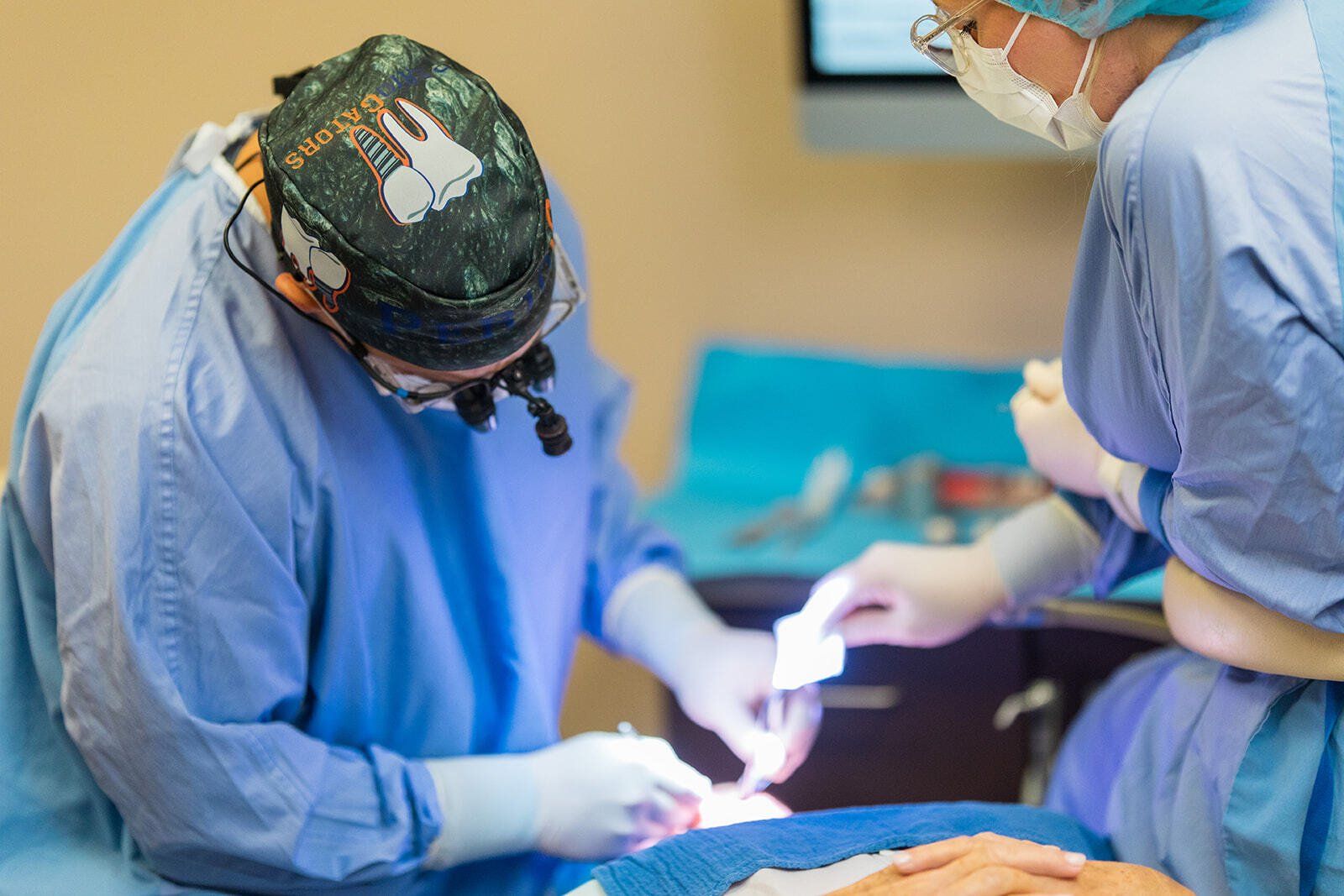Sedation
Increasingly, patients understand the importance of periodontal treatment for their dental and overall health. Despite this awareness, patients may face the additional barrier to treatment-anxiety about the actual procedure. Although recent advancements in dentistry eliminate nearly all the discomfort involved, many patients are still apprehensive. Thankfully, sedative procedures are available to assist in reducing anxiety and facilitating treatment.
Conscious IV Sedation
Our clinicians are licensed in conscious IV sedation, a safe and non-invasive procedure to reduce consciousness during treatment. During conscious IV sedation, just enough of a sedative drug is administered to allow you to be completely calm and relaxed while still being able to talk and interact with the dental team. Although you are aware during the procedure, you will likely not remember it afterwards.
Conscious sedation can help to make your experience more comfortable and pleasant without the risks associated with general anesthesia (being “put to sleep” during a procedure). If you want to learn more about conscious sedation for your procedure, please speak to the periodontist or other team members.

Safety of Sedation
Conscious sedation has a very high margin of safety, and our staff members are all highly trained and experienced in sedation. Along with the periodontist, a member of our clinical team will be present throughout your procedure to closely monitor your wellbeing. We take every precaution, and use equipment such as an automated blood pressure cuff and oxygen sensor to ensure your safety at all times.
What Medication Do You Use?
The most commonly used medications are Halcion, Ativan or Valium. In small doses, these drugs produce a relaxing effect, and in larger doses they induce sleep. We administer enough so that you are still awake, but extremely relaxed.
All of these drugs have a very low incidence of side effects.
After Your Procedure
After treatment, you will need a responsible party to drive you home. It is not safe to drive until the medication has completely worn off, which may take up to 4 hours after it was administered.
Low Radiation Digital X-Rays
Digital X-Rays are taken with very low radiation and have more flexibility in terms of rendition. They are also more convenient when planning treatment with your general dentist.
Magnifier Loops with Fiber Optic Lights
You have probably seen a Magnifier Loop in a jewelry store when the jeweler was closely examining a diamond. Dental Magnifier Loops are made for periodontists to view your teeth and gums in minute detail during periodontal procedures. Your periodontist uses periodontal loops in many procedures to ensure more precise treatment.
